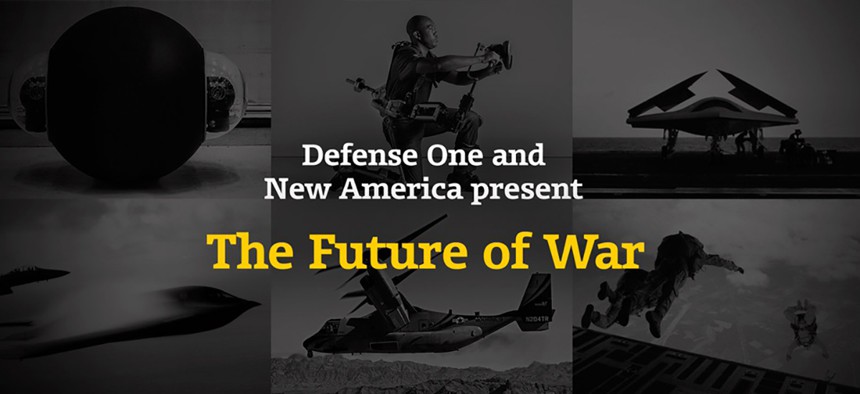
How JSOC Harnessed Networks To Take on Terrorists
A former SEAL and McChrystal aide outlines the cultural shifts that helped fight AQI — and are needed against ISIS.
Search for “It takes a network to defeat a network,” and you’ll get more than 3,000 results. Shorten the query to “it takes a network” and you’re at 1.7 million. The concept has become part of the way we think about the information-age battlefield. But we talk far more about creating network-centric organizations than we actually do it.
The idea was introduced into academic thinking by John Arquilla and David Rondfeldt during their work at RAND in the 1990s, and its key phrase entered the broader conversation in the mid-2000s, when then-Lt. Gen. Stan McChrystal overhauled the Joint Special Operations Command and demonstrated the power of the network approach against Al Qaeda in Iraq (AQI). Now we need to learn from JSOC’s success.
When Gen. McChrystal took over JSOC in 2003, a poorly trained, ill-equipped, and underfunded adversary was outmaneuvering the world’s best counterterrorism forces. Our systems followed a reductionist, silo-based organizational model that was designed in the Industrial Age to operate with efficiency and scale in a highly predictable manner. But networked organizations — whether terror groups or consumer ecosystems — are organic entities in a constant state of unpredictable evolution. In fighting AQI, we initially found ourselves trying to predict their actions – and plan efficiently against those predictions. The problem was, even the AQI network didn’t know its next move. Their changes were driven by input variables — in many cases, our raids against their key members — as much or more than centralized control.
Eventually, the reality set in that we were facing an entirely new type of conflict. Driven by the incalculable amounts of data and levels of connectivity available to anyone with a smartphone or Internet connection, the Network Age brought speeds of information flow and levels of interconnectedness between individuals that traditional organizational structures simply were not designed to handle. Winning was not simply a matter of creating a superior strategy or of improving our effectiveness on the ground. We faced the far more daunting task of fundamentally redesigning the organization. Our structure needed to become our strategy.
JSOC’s shift to operate as a distributed network required a host of process changes and at least two cultural shifts. First, we created “shared consciousness.” Beginning with the Counterterrorism Task Force as our hub, we expanded our network ties to conventional military units and beyond, creating deep relationships with the broader interagency team: State Department, intelligence, every key organization. This allowed us build inclusive, global communications that moved faster than the threats we faced. The heartbeat of our organization, this shared consciousness enabled thousands of people around the world to see and understand the problem in lock-step and near-real-time.
This allowed us to take the next critical step: “empowered execution.” Today’s terror networks are decentralized, so fighters on the fringe simply need a general understanding of the organization’s intent – and from that point they can operate with incredible speed and independence. Traditional systems, designed for efficiency and scale, are simply incapable of keeping up. In the early days of the fight against AQI, we found that as we contemplated or planned our next action, our opponents would make three moves in quick succession, leaving us flat-footed and overwhelmed. Pushing requests through the bureaucracy slowed us down when minutes counted. Our target would melt back into the chaos and plan another action.
There are good reasons to send important decisions to the top: subordinates tend to lack the strategic context to make informed choices on complex issues. But using our newfound “shared consciousness” of our global team-of-teams network, we empowered individuals in the Task Force to execute independently to an unprecedented degree. Better information sharing plus empowered people yielded a smarter, faster force that could soon outmaneuver the enemy.
As an aide to Gen. McChrystal in his final year at JSOC, I watched how his transformed organization did business. Coming off the battlefield, we could all recite that it “took a network” — but no one had explored how we arrived at this moment. So Gen. McChrystal, David Silverman, and Tantum Collins, and I dove deeper into the topic in our new book, Team of Teams: New Rules of Engagement for a Complex World, and we came to better understand several fundamental principles.
Through this lens, we saw how ISIS is expertly harnessing the new speed of information flow. It’s difficult to measure ISIS’ reach on social media, but a recent Brookings study suggests at least 46,000 active Twitter accounts are supporting their messaging, providing a daily reach unprecedented for a non-state group that controls no traditional media.
Such tools are making it easier and easier to spread ideas — and ISIS is, as much as anything, an idea. It proffers to the disenfranchised masses, both in the region and around the globe, a path to glory and a way to poke the great powers in the eye. In reality, of course, it’s a miserable organization that provides nothing but oppression — but that’s not the point. The interconnected nature of today’s world allows it to push a narrative from the deserts of Iraq to the chat rooms of Europe to the living rooms of North America, spreading fear and enticing recruits.
Bottom line: the situation is far too complex and unpredictable for a traditional organizational structure to respond to. So we need to change to confront ISIS, much as we did to fight AQI.
Recently, Joint Chiefs Chairman Gen. Martin Dempsey, called Gen. McChrystal’s approach a model for the current fight against ISIS. But implementing such a system can prove even harder than accepting the need to do so. Even as the network shift is changing everything — conflicts to nation-state relationships to enterprises — many of the organizations that should be applying its lessons to today’s fight are allowing their bureaucracies to revert to traditional, pre-21st-century modes of operating.
JSOC’s model has its limitations. It cannot be fully controlled from the Beltway, nor constrained by bureaucracy or interagency intricacies. It needs to be decentralized and run out of the theater of war. And its hub needs real empowerment from Washington to execute a known strategy, pursue a desired end-state, and handle the hard work of building and managing real partnerships, not sound-bite coalitions.
And, of course, our model can only contain or shrink the problem. The root causes of these conflicts must be addressed, or we’ll be fighting ISIS’s networked younger brother some years down the road.
But it’s the model we need — and not just in our military. The shifts of the network age must change not just how we fight, but how we structure higher education, health care, global businesses, and any number of 20th-century endeavors.
